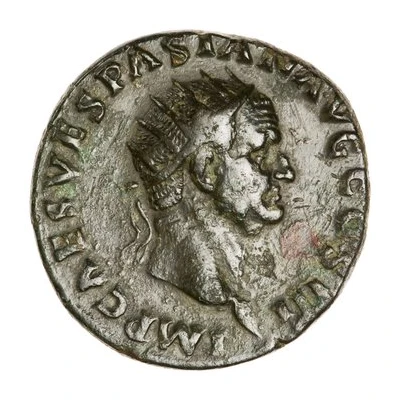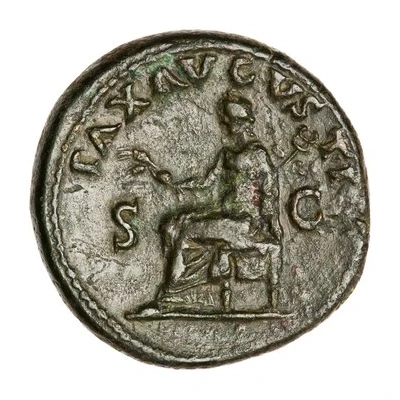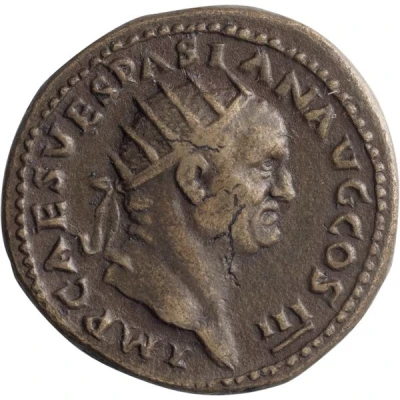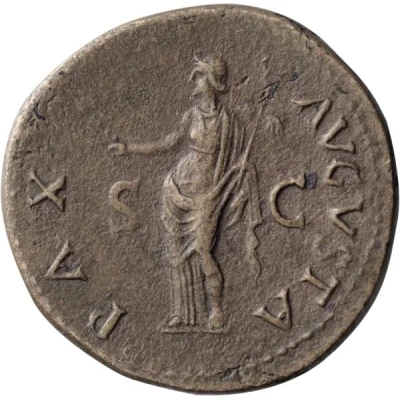


© American Numismatic Society (ANS)
Dupondius - Vespasian PAX AVGVSTI S C; Pax
71 year| Bronze | 13.5 g | 26 mm |
| Issuer | Rome › Roman Empire (27 BC - 395 AD) |
|---|---|
| Emperor | Vespasian (Titus Flavius Vespasianus) (69-79) |
| Type | Standard circulation coin |
| Year | 71 |
| Value | 1 Dupondius = ⅛ Denarius |
| Currency | Denarius, Reform of Augustus (27 BC – AD 215) |
| Composition | Bronze |
| Weight | 13.5 g |
| Diameter | 26 mm |
| Shape | Round (irregular) |
| Technique | Hammered |
| Demonetized | Yes |
| Updated | 2024-10-06 |
| Numista | N#249177 |
|---|---|
| Rarity index | 100% |
Reverse
Pax seated left, holding corn-ears and caduceus.
Script: Latin
Lettering: PAX AVGVSTI S C
Translation:
Pax Augusti. Senatus Consultum.
Peace provided by the Emperor. Decree of the senate.
Comment
Source: Online Coins of the Roman Empire (OCRE)Interesting fact
The Dupondius - Vespasian coin was minted during the reign of Emperor Vespasian, who ruled the Roman Empire from 69 to 79 AD. The coin's design features the goddess Pax (Irene in Greek) on the reverse, which is an interesting fact in itself. Pax was the goddess of peace, and her presence on the coin may indicate that Vespasian's reign was marked by a period of relative peace and stability in the empire. Additionally, the coin's weight of 13.5 grams is noteworthy, as it suggests that the coin was made of a relatively pure alloy of bronze, which was a common material for coins during that time period. The use of bronze for coins was practical because it was durable, resistant to corrosion, and relatively inexpensive compared to other metals. Overall, the Dupondius - Vespasian coin is an interesting artifact that provides a glimpse into the economic and cultural practices of ancient Rome.

